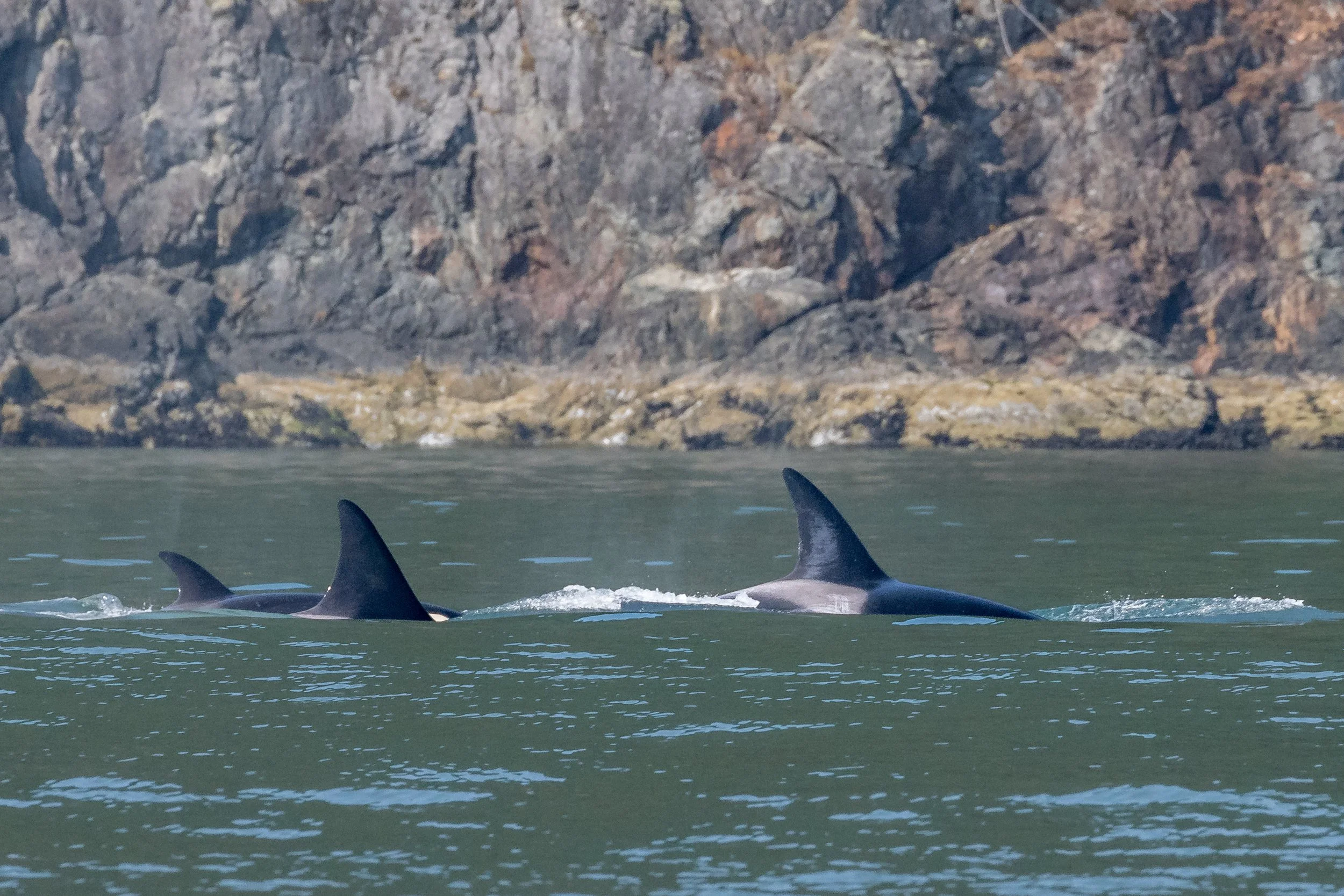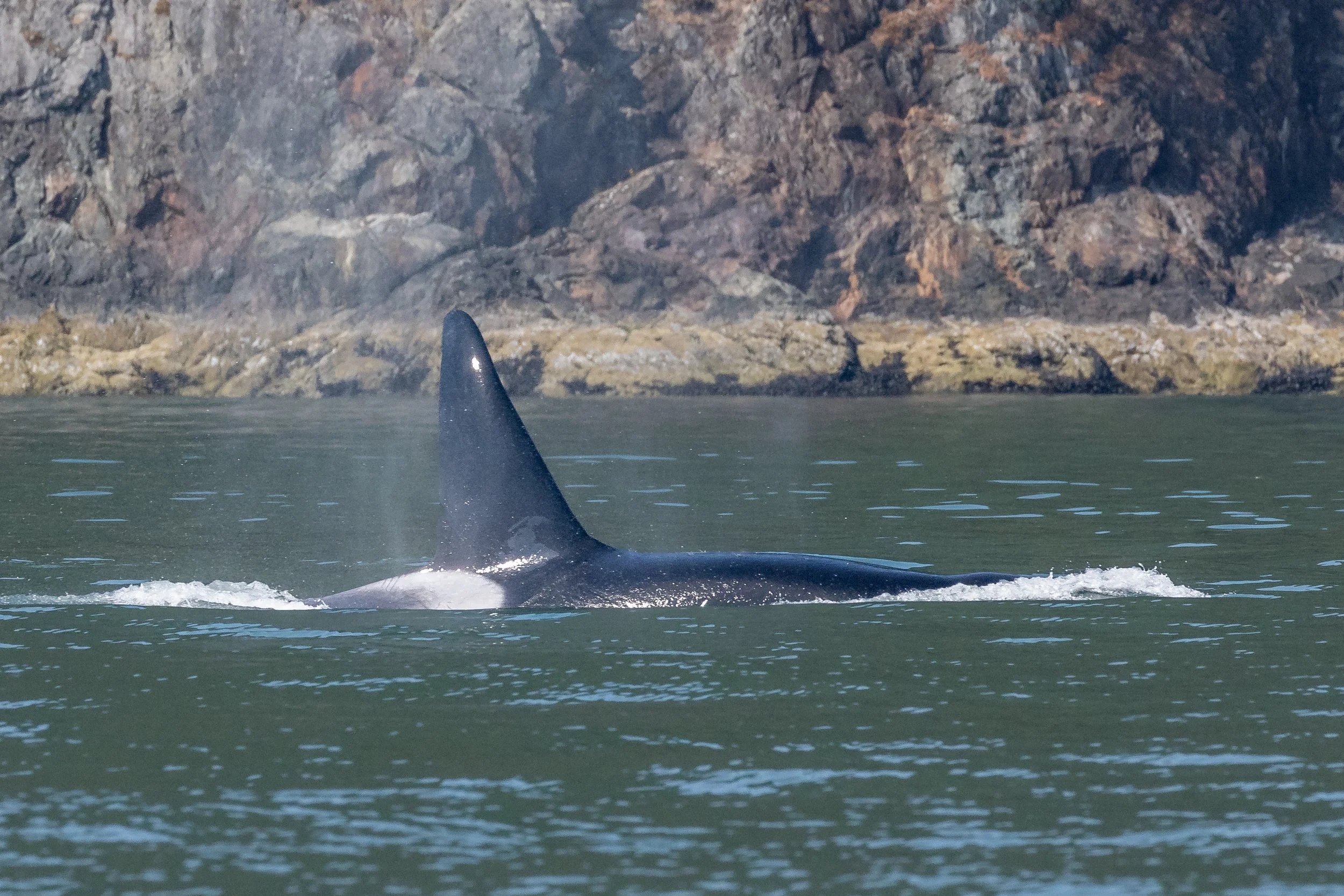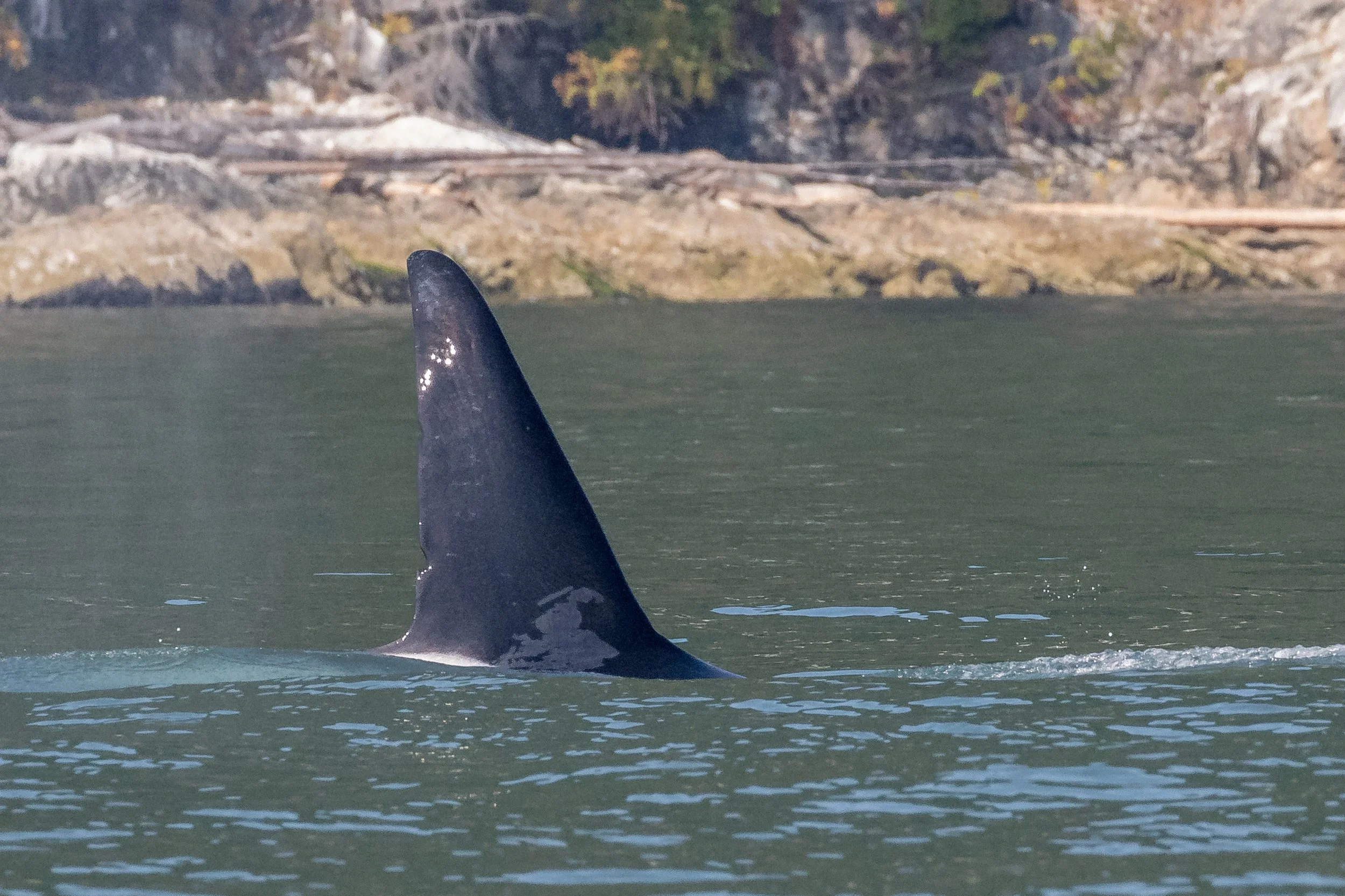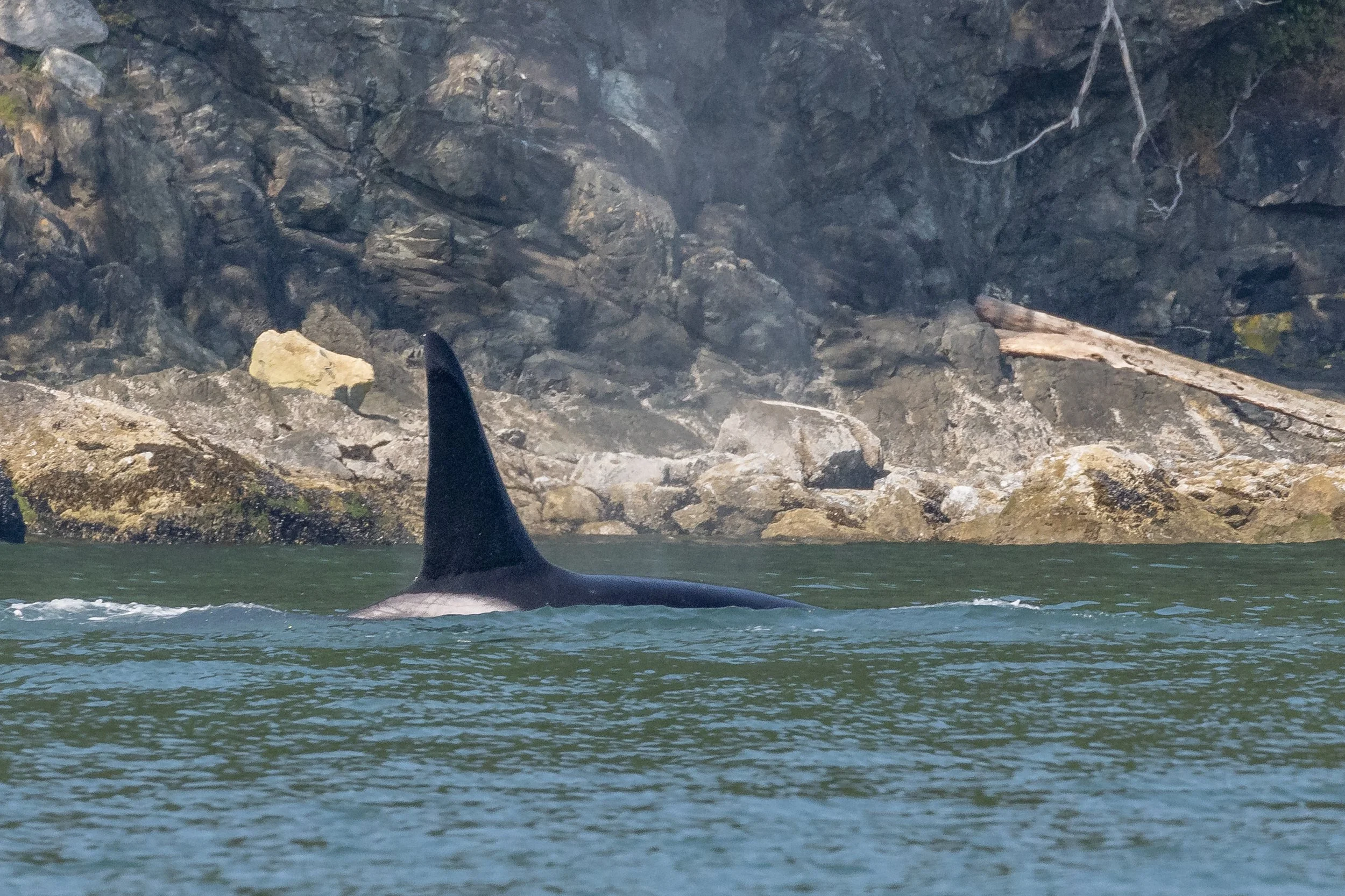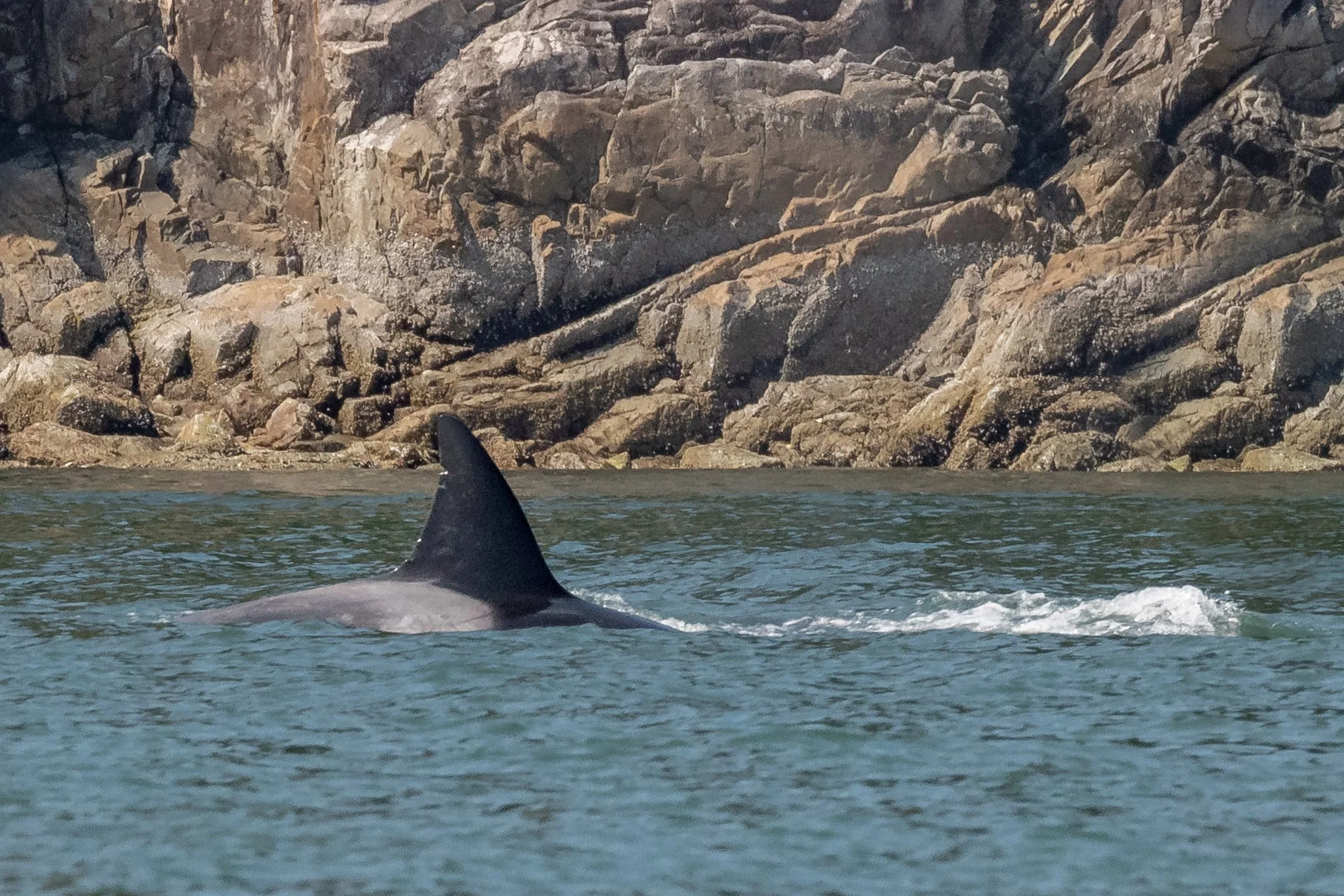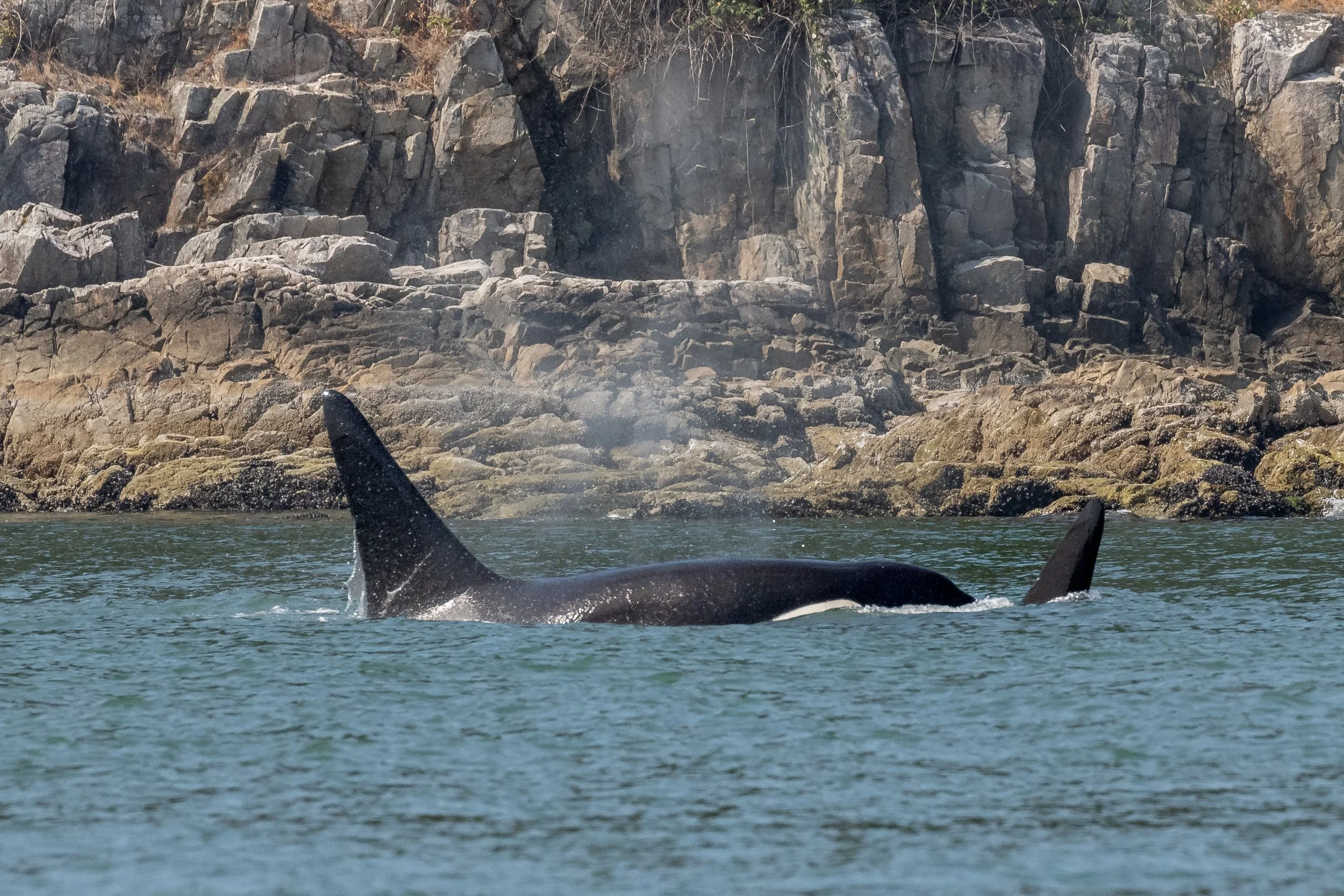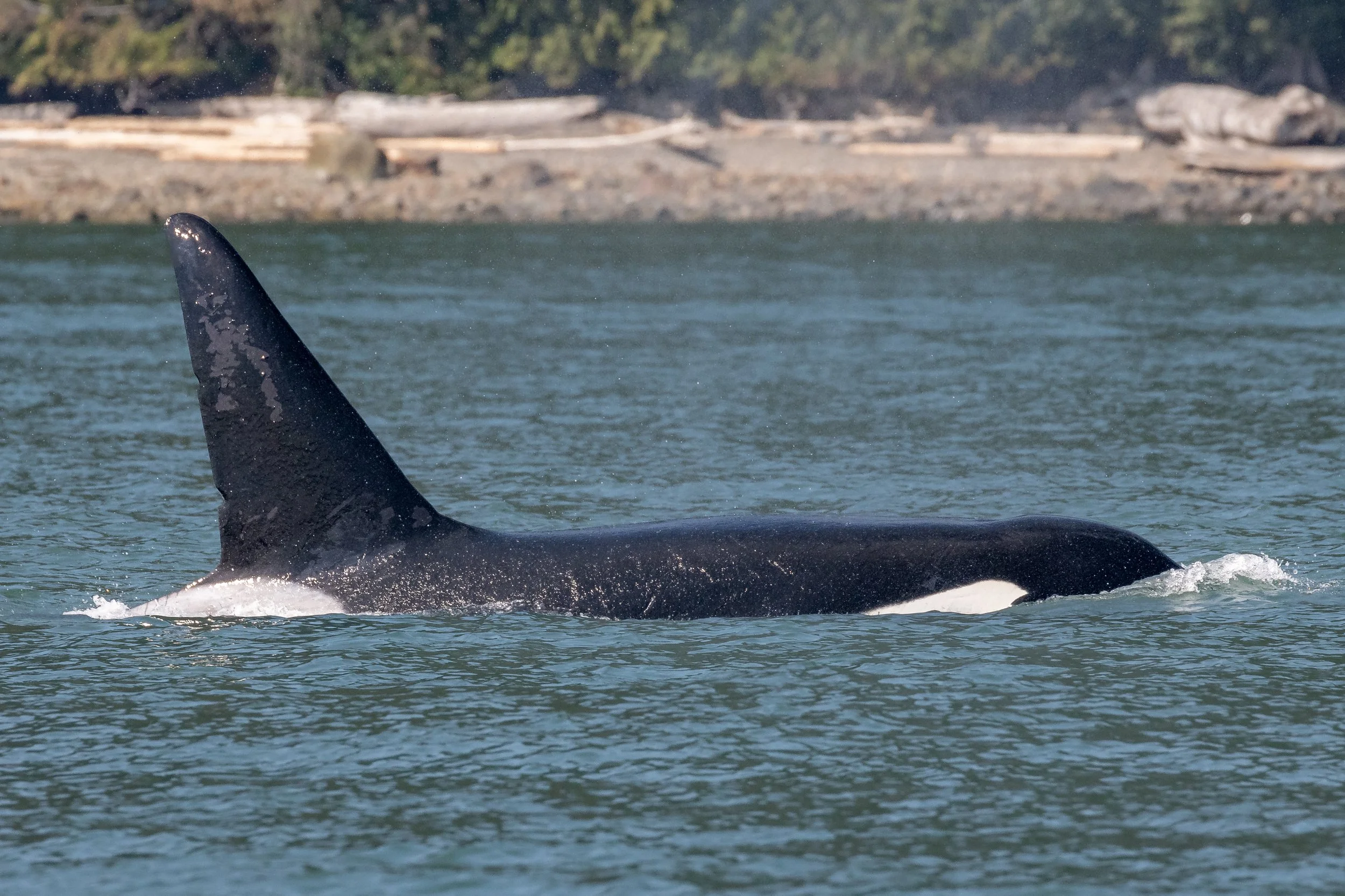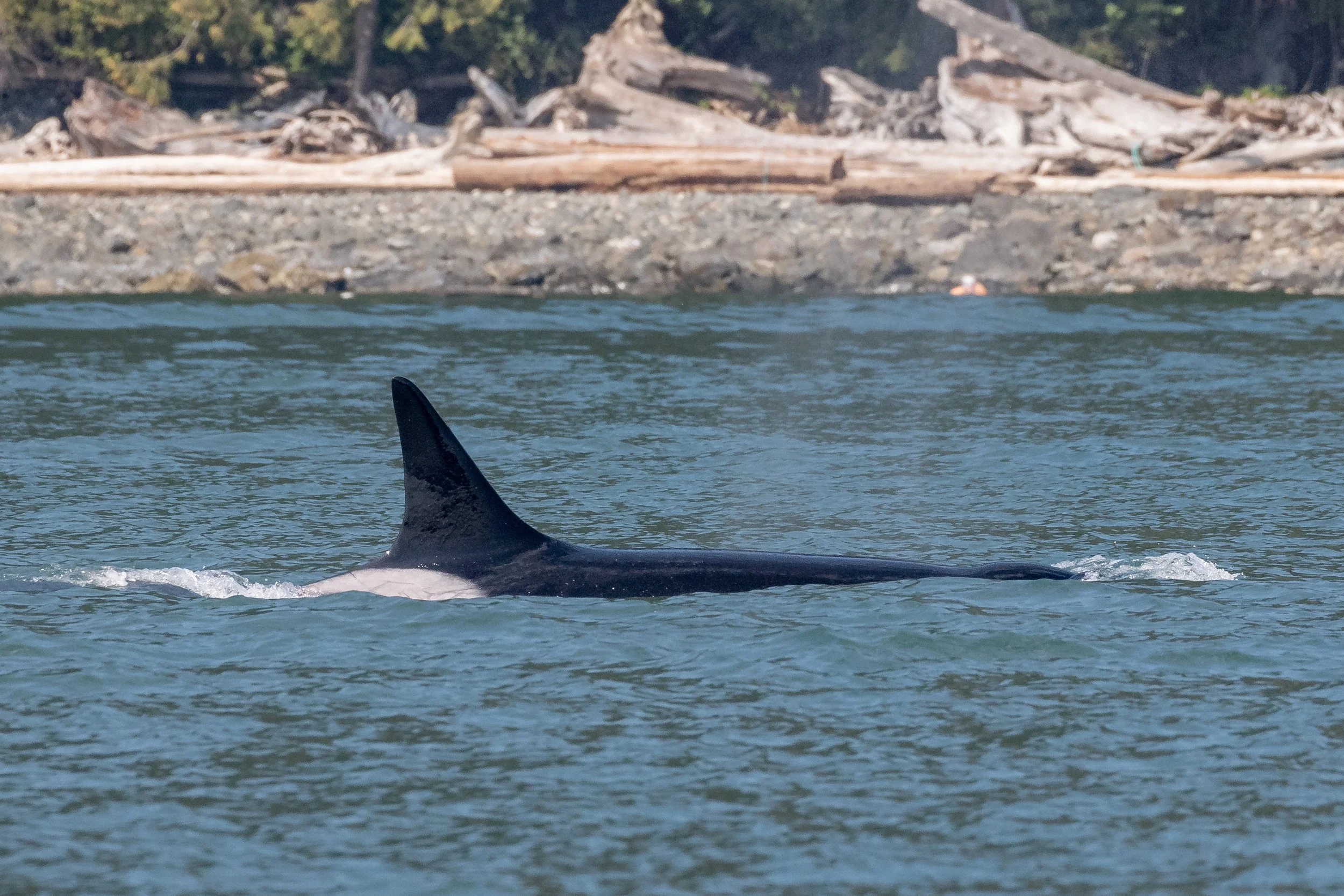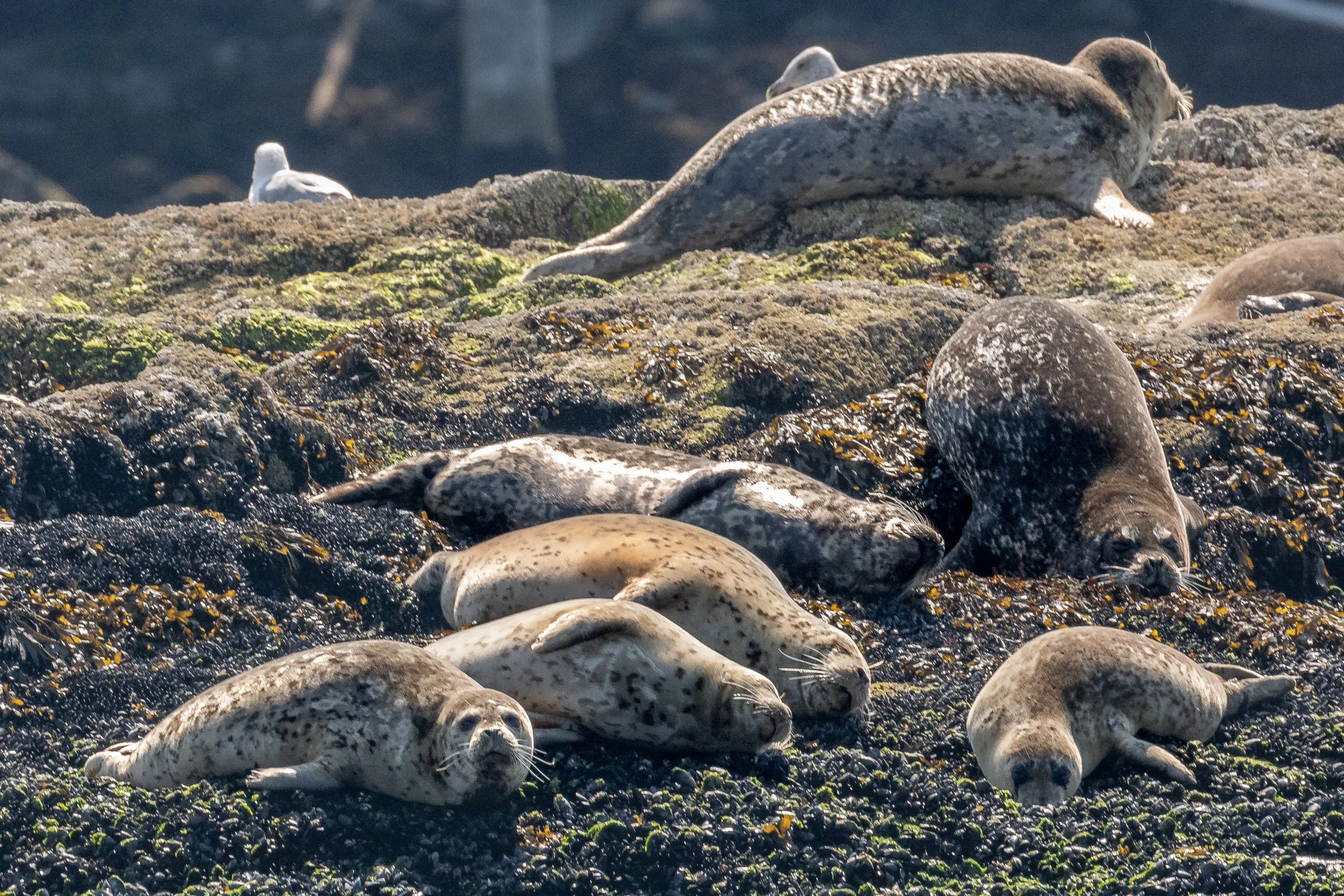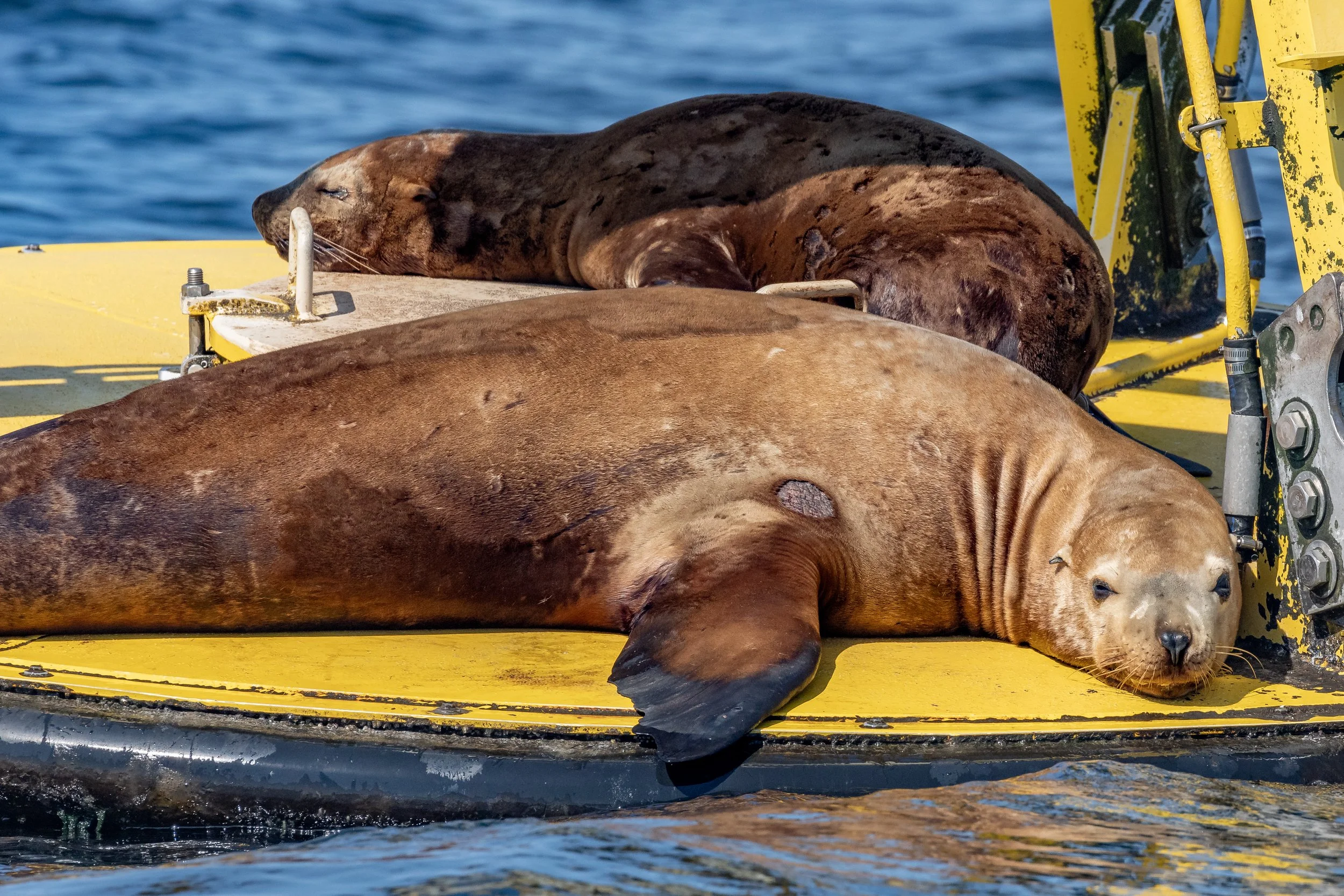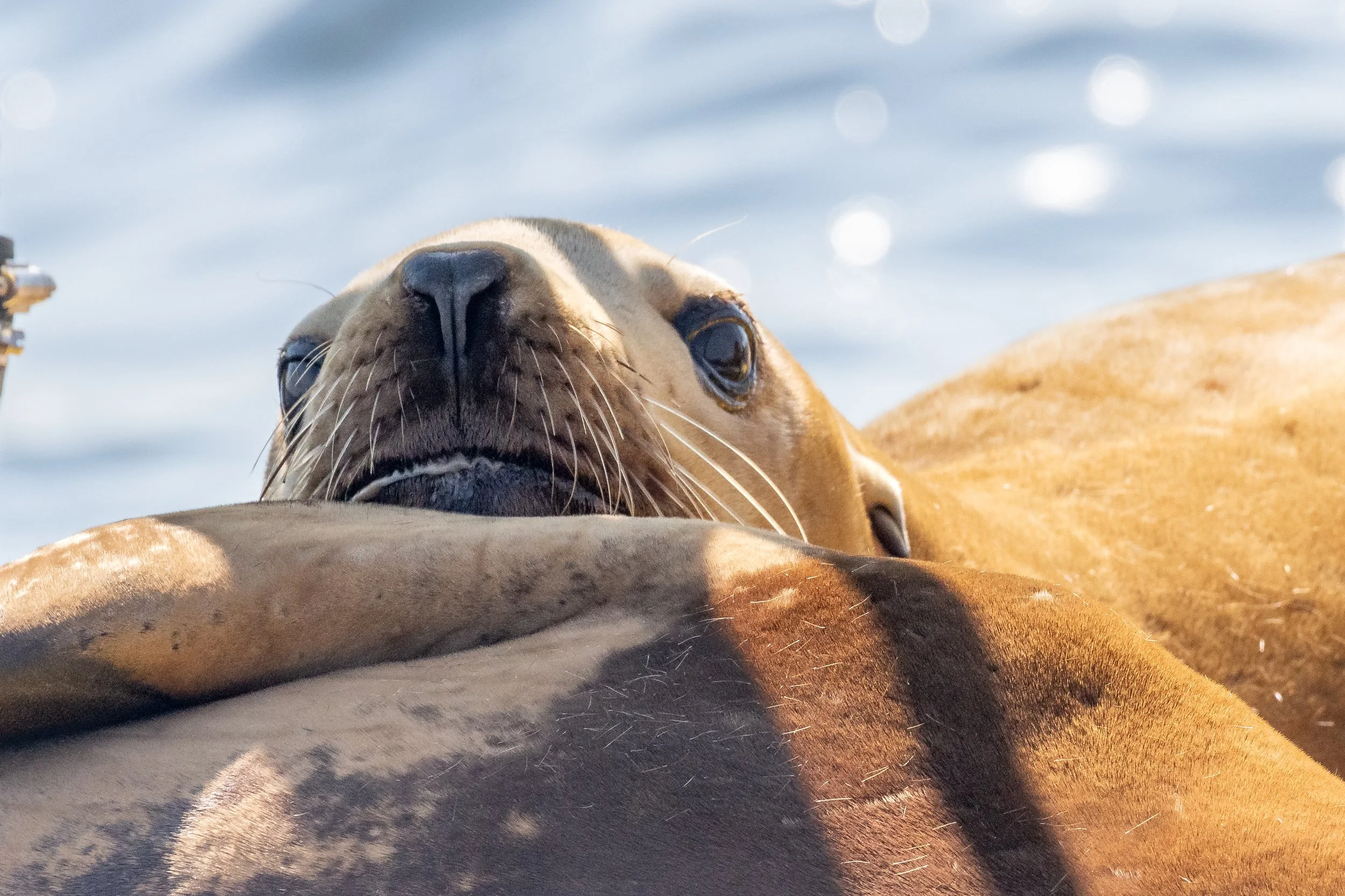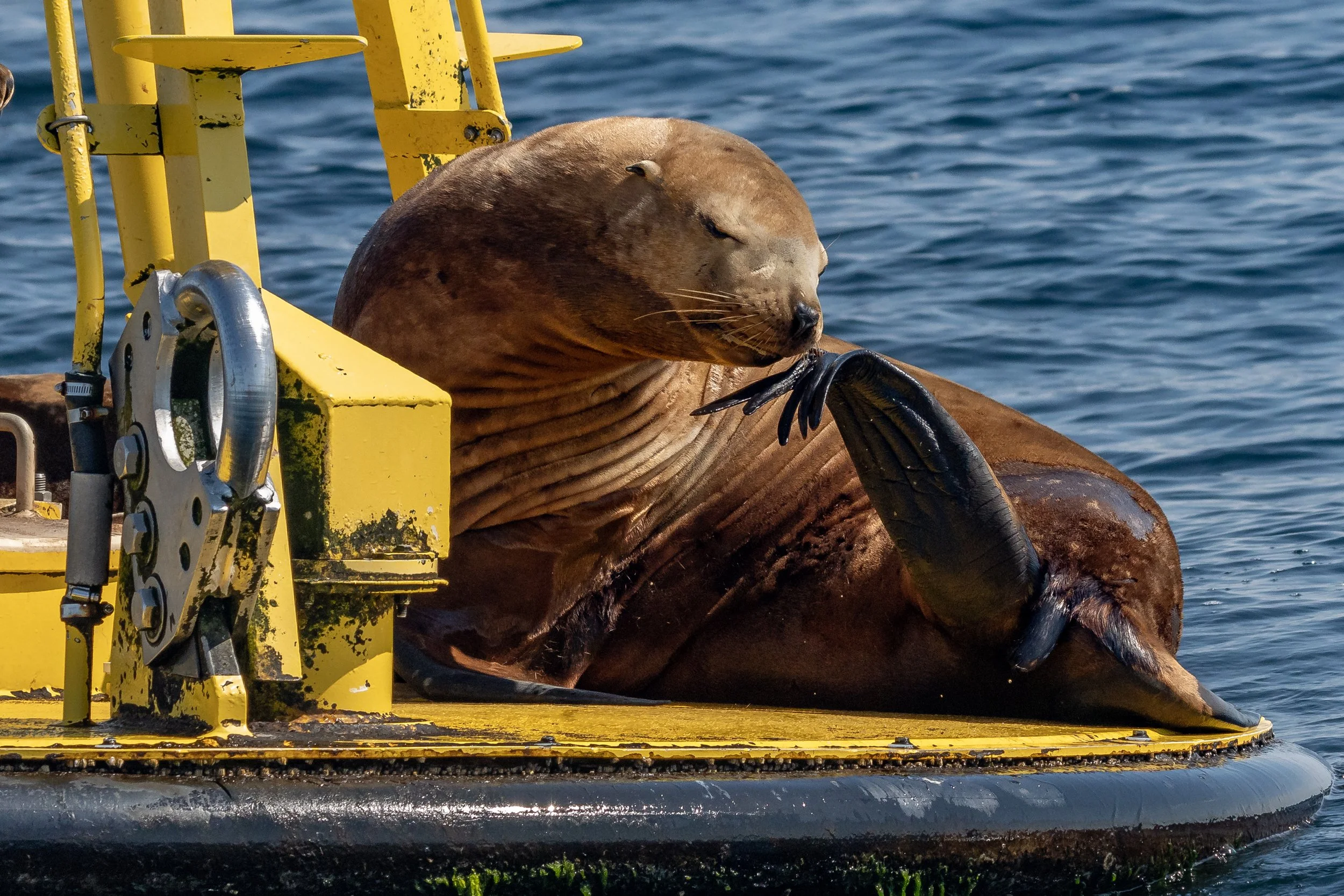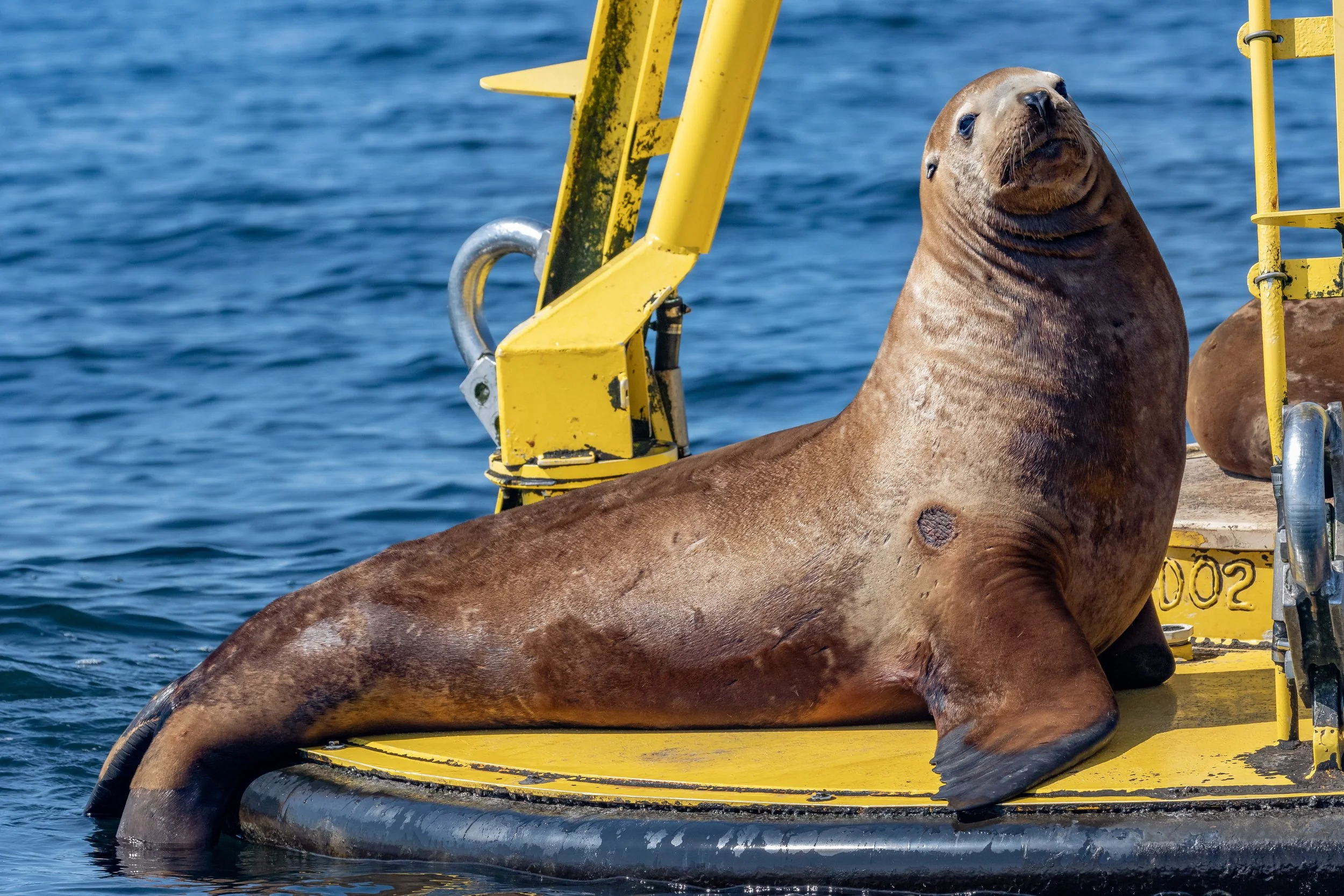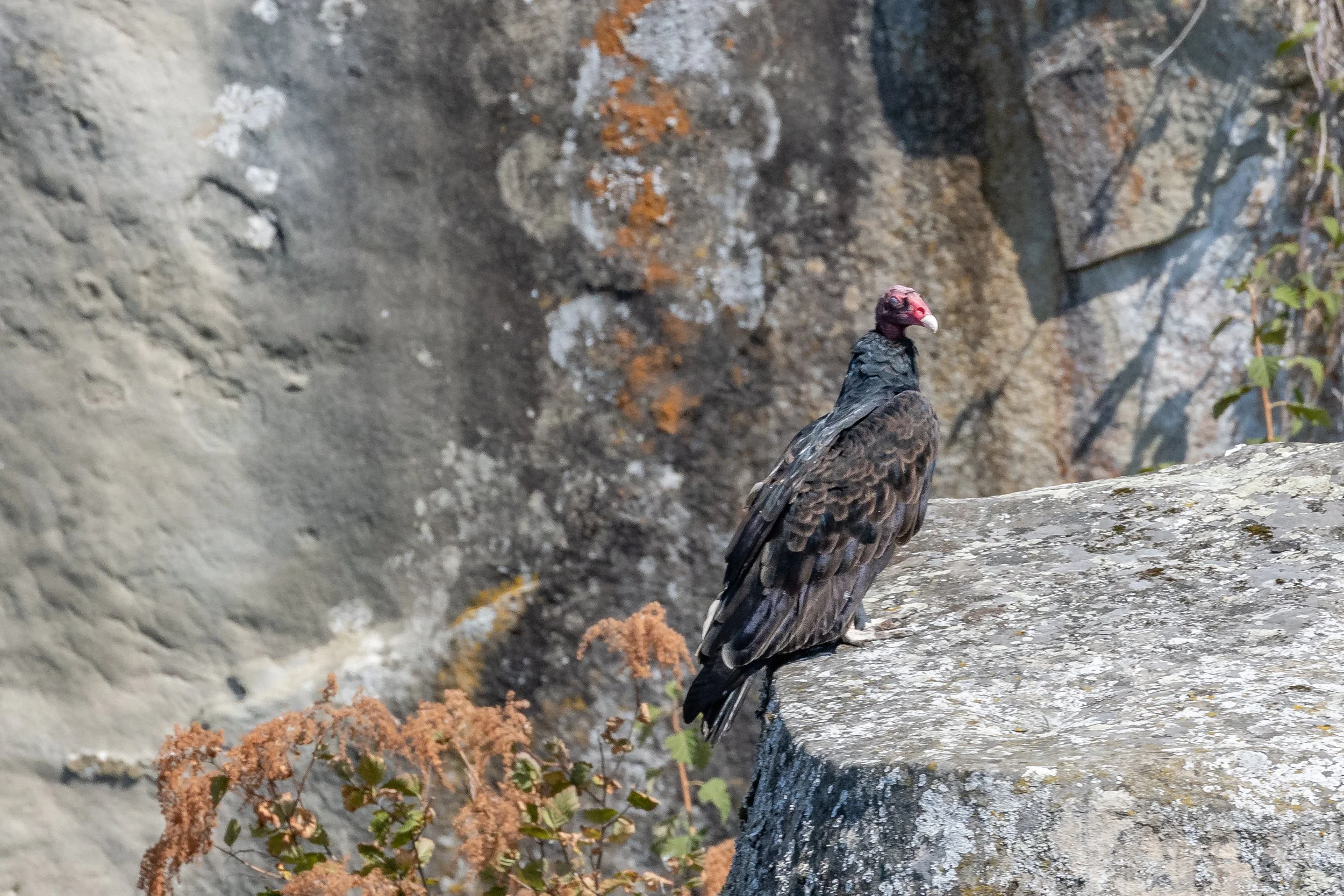August 31st - T-party in Howe Sound!
It was another beautiful day travelling through the Salish Sea searching for whales. Today our search took us over to Howe Sound, which is one of our staff’s favourite places to watch whales. The orca were found just south of Bowen island, swimming deeper into the sound. There were 13 whales present, from 5 pods.
T037A1 Inyo
T101 Reef
T101A Rush
T101B Lagoon
T124A2 Elkugu
T124A2A Agafia
T124A2B Litton
T124A4 Sabio
T124A4A
T137 Loon
T137A Jack
T137B Tempest
T137D Wright
These five pods were travelling together and having a blast! They were breaching, tail-waving, and travelling together. Watching them in Howe Sound is always amazing because in addition to the whales there is a ton of beautiful scenery. Howe Sound is glacial fjord, meaning the islands and waterways were carved out by a glacier during the last ice age. The area is also surrounded closely by the Coastal Mountains which provides a true sea-to-sky experience.
Today the orca were headed straight up the sound, travelling along Bowen Island getting further and further north. This group of whales has an interesting composition, since there would be a mix of young whales, females, and 3 mature males. Having males in the mix usually makes finding a group of orca a bit easier since they have towering 6 foot tall dorsal fins. The fins of the females only get to be about 3 to 4 feet tall in comparison.
T-parties are a great opportunity for the whales, hence why they’re so excited when they happen! The whales typically travel within their family group, so it’s a nice change for these social animals to see a different group. It also provides breeding opportunities for willing whales, since breeding within your own pod would cause genetic issues. Today though, it was unclear what these whales were doing besides partying!
Please enjoy the photos from the day taken by naturalist Aly Kohlman.
Jack (T137A). Photo by Aly Kohlman.
Left to right: T124A4A, Elkugu (T124A2), and Sabio (T124A4). Photo by Aly Kohlman.
Left to right: Litton (T124A2B) and Wright (T137D). Photo by Aly Kohlman.
Jack (T137A). Photo by Aly Kohlman.
Left to right: Elkugu (T124A2) and Jack (T137A). Photo by Aly Kohlman.
Jack (T137A). Photo by Aly Kohlman.
Jack (T137A). Photo by Aly Kohlman.
Left to right: One of the T101 brothers and Jack (T137A). Photo by Aly Kohlman.
Rush (T101A). Photo by Aly Kohhlman.
Left to right: Jack (T137A) and his mother Loon (T137). Photo by Aly Kohlman.
Left to right: Wright (T137D) and his brother Jack (T137A). Photo by Aly Kohlman.
Inyo (T037A1). Photo by Aly Kohhlman.
Left to right: Rush (T101A) and Jack (T137A). Photo by Aly Kohhlman.
Rush (T101A). Photo by Aly Kohhlman.
Jack (T137A). Photo by Aly Kohlman.
Jack (T137A). Photo by Aly Kohlman.
Jack (T137A). Photo by Aly Kohlman.
Left to right: Lagoon (T101B) and Jack (T137A).Photo by Aly Kohlman.
Reef (T101). Photo by Aly Kohlman.
Loon (T137). Photo by Aly Kohlman.
Left to right: Elkugu (T124A2), Lagoon (T101B), and Wright (T137D). Photo by Aly Kohlman.
Photo by Aly Kohlman.
Photo by Aly Kohlman.
Pillow! Photo by Aly Kohlman.
Passed out. Photo by Aly Kohlman.
Photo by Aly Kohlman.
Photo by Aly Kohlman.
A Turkey Vulture showing off its nictitating membrane. Photo by Aly Kohlman.
Photo by Aly Kohlman.
Snack time. Photo by Aly Kohlman.


